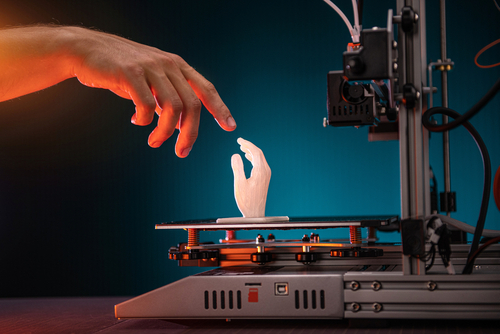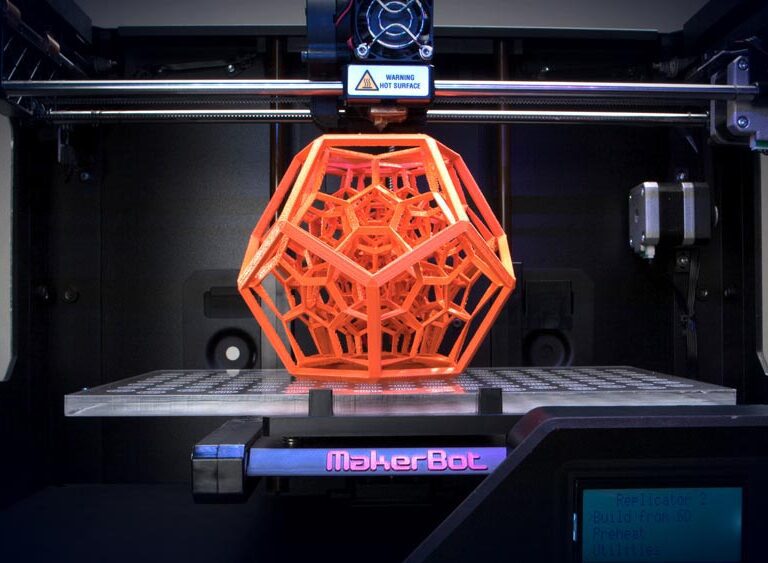Welcome to the fascinating world of 3D printing! Whether you’re a curious hobbyist, an aspiring designer, or a tech enthusiast, understanding the different types of 3D printers and their applications is essential. In this comprehensive guide, we’ll unravel the intricacies of various 3D printing technologies, introduce you to top manufacturers, and explore real-world use cases. So, grab your virtual safety goggles, and let’s dive into the layers of innovation!

Table Of Content
1. Type of 3D Printers
1.1) Stereolithography (SLA)
SLA printers use a laser to draw out each layer from a liquid photopolymer (resin). This process results in high-resolution prints and is commonly used for prototyping and intricate designs.



1.2) Fused Deposition Modeling (FDM)
FDM printers extrude molten thermoplastic filament through a heated nozzle. They are widely available, affordable, and great for hobbyists and beginners. FDM is commonly used for functional prototypes and low-cost production parts.



1.3) Digital Light Processing (DLP)
DLP printers also work with liquid photopolymer resin, but they use a projector chip to project a full layer of curing light. DLP printing is faster than SLA and is suitable for both prototyping and production.



1.4) Selective Laser Sintering (SLS)
SLS printers use a high-energy laser to fuse powder particles (usually nylon or other polymers) layer by layer. SLS is ideal for complex geometries, functional parts, and small production runs.



1.5) Selective Laser Melting (SLM)
Similar to SLS, SLM uses a laser to melt metal powder, creating fully dense metal parts. It’s commonly used in aerospace, automotive, and medical industries for high-strength components.



1.6) Electron Beam Melting (EBM)
EBM is another metal 3D printing technique that uses an electron beam to melt metal powder. It’s particularly suitable for titanium and other high-performance alloys.


1.7) Binder Jetting (BJ)
In binder jetting, a liquid binding agent is selectively deposited onto a powder bed, layer by layer. It’s used for sand casting molds, architectural models, and more.


1.8) Material Jetting (MJ)
MJ printers deposit droplets of liquid photosensitive fusing agent onto a powder bed, which is then cured by light. They offer high precision and are used for detailed models and dental applications.


1.9) Laminated Object Manufacturing (LOM)
LOM printers create objects by layering and bonding sheets of material (usually paper or plastic). They are cost-effective and suitable for large-scale prototypes and architectural models.

2. Comparison
- Precision:
-
- Stereolithography (SLA): SLA printers offer high precision due to their laser-based curing process. They can achieve fine details and smooth surfaces.
- Digital Light Processing (DLP): DLP printers also provide good precision, similar to SLA, but with faster print speeds.
- Selective Laser Sintering (SLS): SLS printers have excellent precision for complex geometries and functional parts.
- Material Jetting (MJ): MJ printers offer high precision and are commonly used for detailed models and dental applications.
- Cost of 3D Printer:
- Fused Deposition Modeling (FDM): FDM printers are generally more affordable and widely available. They are great for hobbyists and beginners.
- Binder Jetting (BJ): BJ printers are cost-effective and used for sand casting molds and architectural models.
- Laminated Object Manufacturing (LOM): LOM printers are also budget-friendly and suitable for large-scale prototypes.
- Cost of Materials:
- FDM: FDM filament materials (such as PLA or ABS) are relatively inexpensive.
- SLA/DLP: Resin materials for SLA and DLP printers can be costlier than filaments.
- SLS: SLS powders (usually nylon) are moderately priced.
- Metal 3D Printing (SLM/EBM): Metal powders for SLM and EBM are expensive.
- Size of 3D Printer:
- FDM: FDM printers come in various sizes, from small desktop models to large industrial machines.
- SLS/SLM/EBM: These printers are typically larger due to their powder bed size and build volume.
- SLA/DLP: SLA and DLP printers vary in size, but desktop versions are common.
3. Manufacturers
- Stereolithography (SLA):
-
- Creality: Creality, a global leader in consumer-level 3D printer ecosystems, offers a range of SLA printers along with their popular FDM models.
- Formlabs: Formlabs is known for its high-quality SLA printers, including the Form 3 and Form 3L, which are widely used in various industries.
- Fused Deposition Modeling (FDM):
-
- Prusa Research: Prusa Research, founded by Josef Prusa, produces the popular Original Prusa i3 series, known for their reliability and open-source design.
- Anycubic: Anycubic manufactures budget-friendly FDM printers like the Anycubic Kobra 2 and Anycubic Photon M3, catering to both beginners and enthusiasts.
- Digital Light Processing (DLP):
-
- Peopoly: Peopoly offers DLP printers like the Moai series, known for their precision and compatibility with various resins.
- Wanhao: Wanhao’s Duplicator 7 and Duplicator 8 are well-regarded DLP printers in the market.
- Selective Laser Sintering (SLS):
-
- Sintratec: Sintratec produces compact SLS printers suitable for prototyping and small-scale production.
- EOS: EOS, a pioneer in industrial 3D printing, offers high-end SLS machines for aerospace, automotive, and medical applications.
- Selective Laser Melting (SLM):
-
- Concept Laser (now part of GE Additive): Concept Laser produces SLM machines for metal printing, used in aerospace and medical industries.
- Renishaw: Renishaw’s SLM systems are known for their precision and reliability in producing metal parts.
- Electron Beam Melting (EBM):
-
- Arcam (now part of GE Additive): Arcam specializes in EBM technology, particularly for aerospace and orthopedic applications.
- Sciaky: Sciaky offers large-scale EBM machines for metal additive manufacturing.
- Binder Jetting (BJ):
-
- ExOne: ExOne manufactures industrial binder jetting printers, suitable for sand casting molds and metal parts.
- Voxeljet: Voxeljet’s VX1000 and VX2000 are popular binder jetting systems for foundry applications.
- Material Jetting (MJ):
-
- Stratasys: Stratasys produces PolyJet printers, which use material jetting technology to create high-resolution, multi-material prototypes.
- 3D Systems: 3D Systems offers the ProJet series, known for their precision and versatility in material jetting.
- Laminated Object Manufacturing (LOM):
-
- Mcor Technologies: Mcor produces LOM printers that use paper as the base material, creating full-color, low-cost models.
- ZCorp (now part of 3D Systems): ZCorp was an early player in LOM technology, offering printers for architectural models and prototypes.
4. Conclusion
In summary, 3D printing technology has evolved significantly, offering a range of options for different needs. If precision and intricate details are crucial, consider SLA or DLP printers. For budget-friendly choices, FDM, Binder Jetting, and Laminated Object Manufacturing are excellent. When it comes to material costs, keep in mind that resin-based printers may be pricier than filament-based ones. Finally, consider the size of the printer based on your available space and intended projects. Happy printing!
Download PDF Version Here:
Demystifying 3D Printing: Your Ultimate Guide
5. References
https://3dinsider.com/3d-printer-types/
https://nexa3d.com/blog/3d-printing/
https://www.hubs.com/knowledge-base/types-of-3d-printing/
https://www.protolabs.com/resources/blog/types-of-3d-printing/
https://www.3dsourced.com/3d-printers/main-types-of-3d-printer-explained/
https://www.gettyimages.com/detail/photo/printing-machine-royalty-free-image/1065223632





